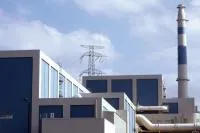
Walking The Fine Atomic Line
As one of the world's foremost users of electricity, Japan has a huge burden to carry when it comes to power generation. Logically, it seems that the best way to satisfy this need is nuclear energy. It's relatively clean, efficient, and totally in sync with Japan's meticulously high-tech national character. However, recent events involving repeated safety shutdowns have been leaving power-watchers sceptical about Japan's nuclear future. Japan has been harnessing nuclear power since 1966. At present, there are 55 nuclear plants providing approximately 30% of the country's electricity, and this number is expected to rise up to 40% by 2017.
However, several reactor sites have recently been plagued by a problem even more indomitable than the country's samurai spirit: Earthquakes.Japan is part of the infamous Ring Of Fire, a hotspot of tectonic and volcanic activity, and what makes nuclear power a tricky proposition in Japan is how much this seismic activity can actually affect nuke plants. July 16, 2007, saw a major earthquake forcing the total shutdown of the Kashiwazaki-Kariwa nuclear power plant. This nuclear plant is the biggest in the world, and puts out around 8,000 MW of power when online. Already the shutdown has cost the Tokyo Electric Power Co. (TEPCO) JPY 603.5 billion (US $ 5.62 billion), with three-fourths of that covering fuel costs that have increased massively to make up for the Kashiwazaki-Kariwa plant's lost capacity.
The shutdown has also triggered a review and
rewrite of Japan's nuclear safety guidelines, including more frequent periodic inspections and beefing up existing electrical and safety systems. These stricter guidelines have had the effect of bringing negative nuclear power incidents under public scrutiny. A very recent incident involving the repeated shutdown of the Fukushima reactor in northern Japan, which once would have gone unnoticed but now merits a worldwide news report, serves to highlight this. But while this and other similar instances of recurring stoppages tends to put Japanese nuclear power generation in a bad light, TEPCO and other Japanese power firms are quick to remind us that these stoppages are done very quickly and precisely, and that everything is being done in order to bring everything back online as soon as possible.
Japan has been looking into wind power generation, as well as other alternative energy sources. But nuclear power will still remain an energy staple in this tech-driven country, particularly with the large-scale expansion plans already being touted by the Japanese government.
Greater safety measures are always welcome, but will being a seismically active country tamp down on Japan's nuclear ambitions? The Japanese government and local power suppliers are scrambling to prove the lie to this theory, in typically thorough yet atypically hurried fashion.



















 Advertise
Advertise






